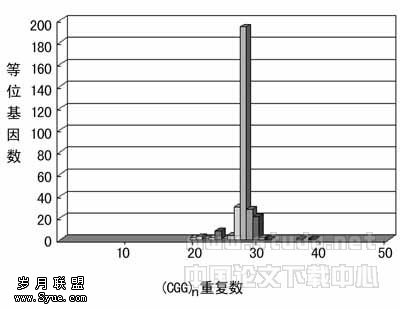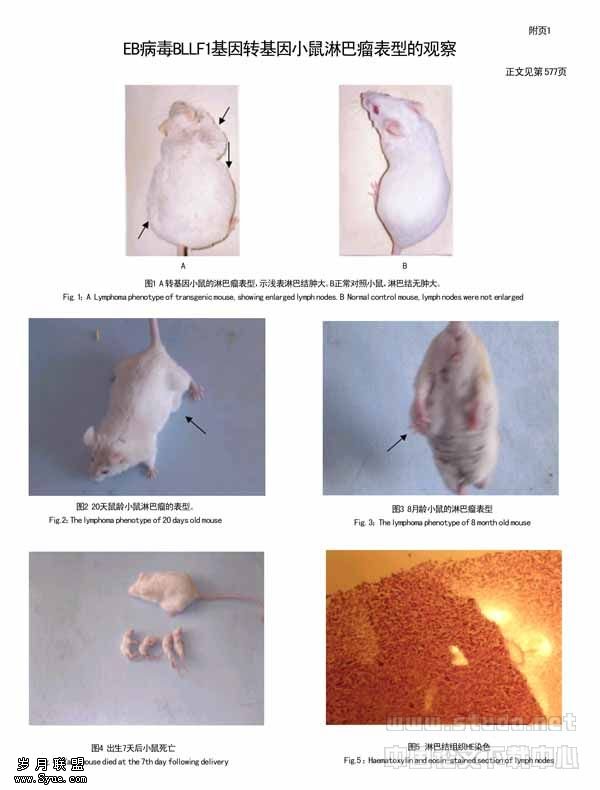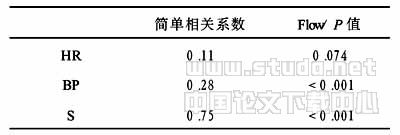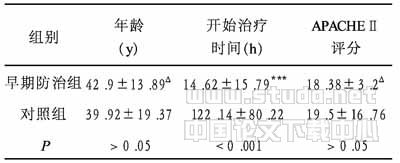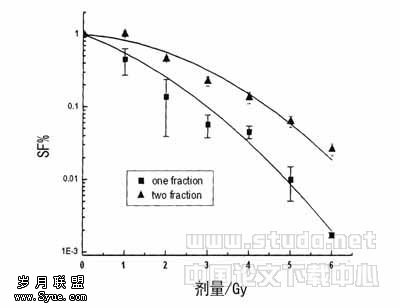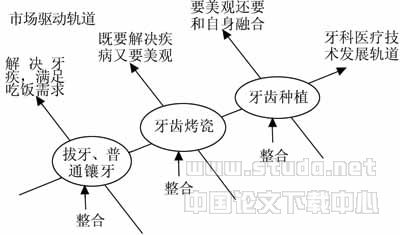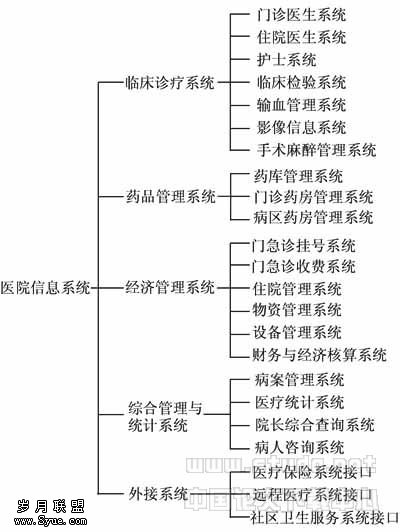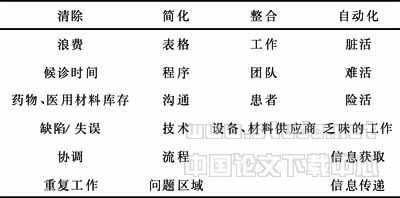痴呆患者血清和脑脊液中炎前和抗炎细胞因子的变化
作者:李龙宣,赵斌,许志恩,邢孔鸯,唐荣华
【关键词】 痴呆;白介素1β;白介素6;肿瘤坏死因子α;白介素1受体拮抗剂
Changes of pro and antiinflammatory cytokines in serum and cerebrospinal fluid of patients with different kinds of dementias
【Abstract】 AIM: To observe the serum and cerebrospinal fluid (CSF) levels of the proinflammatory cytokines, interleukin1 β (IL1β), interleukin6 (IL6), tumor necrosis factor α (TNFα), and the antiinflammatory cytokine, interleukin1 receptor antagonist (IL1ra) in patients with different kinds of dementias and normal controls and to investigate their clinical meanings. METHODS: A total of 70 cases of patients with different kinds of dementias at the Department of Neurology in our hospital and Peoples Hospital of Taishan City from September 2003 to August 2005 were consecutively selected as the observed subjects, including 30 Alzheimers disease (AD) patients, 15 mixed dementia (MD) patients and 25 vascular dementia (VD) patients. The serum and CSF levels of IL1β, IL6, TNFα and IL1ra in the patients with different kinds of dementias and the controls were measured using ELISA. RESULTS: Compared to the controls, the levels of TNFα in CSF in the patients with different kinds of dementias were upregulated, whereas the level of IL1ra was downregulated to some extent (P<0.05 or P<0.01). The differences between the CSF levels of IL1β but not of IL6 in the patients with AD and those in the controls reached statistical significance (P<0.05). In contrast, the patients with VD displayed significantly higher CSF levels of IL6 but not of IL1β compared to the controls (P<0.05). The CSF levels of IL1β and IL6 in the patients with MD are both significantly higher than those in the controls (P<0.01). However, serum levels of IL1β, IL6, TNFα and IL1ra were not significantly different in the patients with different kinds of dementias in comparison with the controls. No correlations were found between CSF and serum levels of the cytokines. CONCLUSION: The changes of pro and antiinflammatory cytokines in the brain might be the factors of the neuropathological damage in AD, VD and MD.
【Keywords】 dementia; interleukin1β; interleukin6; interleukin1 receptor antagonist; tumor necrosis factor α
【摘要】 目的:研究炎前和抗炎细胞因子在不同痴呆患者血清和脑脊液中的变化并探讨其临床意义. 方法:200309/200508我院和台山市人民神经科就诊的70例老年痴呆患者作为观察对象,其中阿尔茨海默病(AD)30例、混合性痴呆(MD)15例、血管性痴呆(VD)25例. 用夹心式酶联免疫吸附法测定各组老年人血清和脑脊液中白介素1β(IL1β),白介素6(IL6),肿瘤坏死因子α(TNFα)和白介素1受体拮抗剂(IL1ra)的水平. 结果:各痴呆组患者脑脊液中TNFα的水平较正常老年人有不同程度升高,而IL1ra则不同程度降低(P<0.05或P<0.01);AD组患者脑脊液中IL1β水平高于对照组(P<0.05),IL6含量较对照组却无增高;VD组患者脑脊液中IL6水平虽显著高于对照组(P<0.05),但IL1β含量与对照组相比无增高; MD组患者IL1β,IL6水平较对照组均有增高(P<0.01). 各痴呆组血清中IL1β,IL6,TNFα和IL1ra的水平与正常老年人相比无差异. 相关分析显示不同痴呆患者血清与其相对应的脑脊液中炎前和抗炎细胞因子水平之间无相关. 结论:痴呆患者脑内炎前和抗炎细胞因子的变化可能是其神经病理损害因素.
【关键词】 痴呆;白介素1β;白介素6;肿瘤坏死因子α;白介素1受体拮抗剂
0引言
目前人们普遍公认,炎性细胞因子参与阿尔茨海默病(Alzheimers disease, AD)患者脑内的神经病理损伤过程,并在这方面作了大量的研究工作. 但同时研究处于不同老年期痴呆患者生前脑内炎前和抗炎细胞因子表达的报道罕见. 本文系统研究了不同老年期痴呆患者,包括AD,血管性痴呆(vascular dementia, VD),混合性痴呆(mixed dementia, MD)患者血清与脑脊液(cerebrospinal fluid, CSF)中炎前和抗炎细胞因子的变化,现报道如下.
1对象和方法
1.1对象200309/200508我院和台山市人民医院神经科住院患者. 简易精神状态检查量表(MMSE)<24分初筛有痴呆纳入观察对象,按照美国精神疾病诊断及统计手册第四版(DSMⅣ)标准诊断痴呆. AD组30例,均符合美国神经病学、语言障碍和卒中阿尔茨海默病和相关疾病学会(NINCDSADRDA)很可能AD的诊断标准,其中男13例,女17例,年龄64.6±7.9(57~76)岁,受(6.4±4.0)年,MMSE评分16.2±6.2,Hachinski缺血指数<4分;MD组15例,诊断根据有痴呆症状,有脑血管病危险因素,神经局灶体征不明显,MRI示脑内无大的梗死,但有小的腔梗,而且数量在5个以上(肉眼可见),其中男8例,女7例,年龄61.8±8.2(56~74)岁,受教育(6.4±4.0)年,MMSE评分16.8±6.4,Hachinski缺血指数4~7分;VD组25例,均符合美国国立神经病与卒中研究所/瑞士神经国际协会(NINDSAIREN)很可能VD的诊断标准,其中男14例,女11例,年龄65.3±8.8(48~75)岁,受教育(6.5±4.1)年,MMSE评分16.6±6.4,Hachinski缺血指数>7分;同时选取20例老年健康志愿者作为对照,无记忆障碍和其他痴呆症状,其中男11例,女9例,年龄61.0±7.6(58~72)岁,受教育(6.5±4.2)年. 各组在性别构成、年龄、受教育年限方面无统计学差异,各痴呆组患者MMSE评分无统计学差异,具有可比性. AD, MD与VD各组患者都有头颅MRI资料,并详细进行神经系统体查以助于鉴别,同时除外引起智能障碍的其他原因.
上述研究对象和对照组均无其他神经系统疾病、免疫系统疾病、系统感染(检查前2 wk无明确感染史)及肝肾功能不全者,且未应用精神抑制药物、非甾体类消炎药、抗氧化剂及免疫抑制. 病例为随机选择,无血缘关系.
1.2方法清晨空腹采集受检者静脉血5 mL,离心取血清;并于上午9:00~11:00在安静状态下按常规行腰穿取CSF 2~3 mL,经离心(3500 r/min, 15 min)后,取上清,分装,置-70℃保存待测. 血清与脑脊液中炎前细胞因子白介素1β (IL1β),白介素6(IL6),肿瘤坏死因子α (TNFα)和抗炎细胞因子白介素1受体拮抗剂(IL1ra)用夹心式酶联免疫吸附法(ELISA)定量检测,试剂盒购自晶美生物工程有限公司.
统计学分析:计量数据以x±s表示, 采用SPSS 12.0软件进行方差分析(F检验)和多重比较(q检验)以及直线相关分析.
2结果
患者血清中炎前和抗炎细胞因子在各组间均无差异(P>0.05,表1),但患者脑脊液中炎前和抗炎细胞因子有差异(表2). 以不同痴呆患者血清炎前和抗炎细胞因子水平与其相对应脑脊液中的炎前和抗炎细胞因子水平分别进行直线相关分析:发现不同痴呆患者血清与脑脊液中IL1β,IL6,TNFα和IL1ra的水平之间无相关(P>0.05).
表1患者血清中白介素1β,白介素6,肿瘤坏死因子α和白介素1受体拮抗剂水平(略)
表2患者脑脊液中白介素1β,白介素6,肿瘤坏死因子α和白介素1受体拮抗剂水平(略)
3讨论
AD,VD和MD是老年阶段发生几率较多的痴呆,虽然它们在临床表现上各有其特点,但都表现出痴呆,那么它们之间有没有共同的病理损害过程和联系呢?这是一个值得深入研究的问题.
有证据表明AD患者脑内存在强烈的局灶性炎症反应,老年斑附近有激活的小胶质细胞和星形胶质细胞,研究发现这些激活的胶质细胞可以表达IL1β,TNFα等多种炎前细胞因子和补体分子[1-3]. 动物实验研究显示,用老年斑的主要成分β淀粉样肽可诱导出类AD患者脑内的炎症反应,并伴有白细胞的激活与外渗以及炎症细胞因子的产生. 由此有专家提出AD神经元退行性病变可能是脑内免疫和炎症反应不适当激活所致,超强的免疫反应可“方向错误”地攻击神经组织,造成神经元损伤和死亡[4]. 新近研究发现AD患者脑内除了高表达炎前细胞因子外[5-6],尚有抗炎细胞因子(IL1ra)表达量的降低[7]. 资料显示VD患者脑内亦有TNFα和IL6等炎性细胞因子的表达上调[5,8]. 因此有人提出这样的假说:尽管AD,VD患者神经元退变的始动因素不同,并由此出现不同神经病理损害的结局,但它们有可能通过启动炎性细胞因子产生的级联反应这一相似的过程而引致神经元的损伤. 而AD,VD患者中枢神经系统炎性细胞因子的大量释放有可能使诸如淀粉样肽的产生,淀粉样肽在血管内聚集以及脑白质损害这些病理变化得以放大,从而引起一系列的恶性循环. 临床研究发现,AD患者可以出现脑白质梗死和脑血管病变,VD患者脑内可有老年斑的存在,这些现象都支持上述假说的合理性[9]. AD,VD和MD作为老年期发生较多的三种痴呆,研究其脑内炎前和抗炎细胞因子的变化对于找出它们之间的联系有重要意义. 针对这个问题,本研究同时观察了炎前细胞因子IL1β,IL6和TNFα与抗炎细胞因子IL1ra在不同痴呆患者以及正常老年人血清和脑脊液中的变化. 结果各痴呆组患者脑脊液中TNFα的水平较正常老年人有不同程度升高,而IL1ra这种天然的特异性细胞因子抑制物则不同程度降低;AD组患者脑脊液中IL1β水平明显高于对照组,IL6含量较对照组却无明显增高;VD组患者脑脊液中IL6水平虽显著高于对照组,但IL1β含量与对照组相比无显著增高;MD组患者IL1β,IL6水平较对照组均有明显增高. 由此我们有理由相信脑内炎前和抗炎细胞因子表达失衡有可能是不同老年性痴呆患者共同的病理损害过程,作为神经保护分子的抗炎细胞因子低表达,不能有效抑制炎前细胞因子过度表达而产生的级联效应可能使得不同痴呆患者的病理改变不断放大,从而促进了痴呆的发生与. 从本实验结果来看,不同痴呆患者脑内均有TNFα高表达,而IL1ra则不同程度降低,由此推断TNFα的增高和IL1ra的降低可能是炎症级联反应的必要条件. 而AD,MD与VD患者脑内炎性细胞因子增高不尽相同,这提示痴呆患者脑内炎症级联反应是一复杂过程,涉及多种炎性细胞因子参与,并不完全由相同炎性细胞因子所激发.
郭峰等[10]报道显示,AD组患者血清IL1β含量明显高于正常对照组,血清IL6含量较正常对照组却无明显差异,而本组资料中各痴呆组患者血清中IL1β,IL6,TNFα和IL1ra水平与正常老年人相比均无明显差异,这与郭峰等报道的并不完全一致,其原因可能与病例纳入标准,样本量大小及检测手段不同有关. 相关分析显示不同痴呆患者血清与其相对应的脑脊液中炎前和抗炎细胞因子水平之间无显著相关. 这说明痴呆患者炎症反应不是全身性的,主要集中在中枢神经系统,脑内炎性细胞因子的增高并不是外周免疫系统激活所致.
【】
[1] Mrak RE, Griffin WS. Potential inflammatory biomarkers in Alzheimers disease [J]. J Alzheimers Dis, 2005, 8(4): 369-375.
[2] Griffin WS. Inflammation and neurodegenerative diseases [J]. Am J Clin Nutr, 2006, 83(2): 470S-474S.
[3] Craft JM, Watterson DM, Van Eldik LJ. Human amyloid betainduced neuroinflammation is an early event in neurodegeneration [J]. Glia, 2006, 53(5): 484-490.
[4] Wang L, Han J, Zhang Y, et al. Detection of interleukin1 beta and tumor necrosis factor alpha in serum and cerebrospinal fluid in patients with Alzheimer disease [J]. Chin J Neurol, 2002, 35(6): 339-341.
[5] Tarkowski E, Liljeroth AM, Minthon L, et al. Cerebral pattern of pro and antiinflammatory cytokines in dementias [J]. Brain Res Bull, 2003, 61(3): 255-260.
[6] Bagli M, Papassotiropoulos A, Hampel H, et al. Polymorphisms of the gene encoding the inflammatory cytokine interleukin6 determine the magnitude of the increase in soluble interleukin6 receptor levels in Alzheimers disease. Results of a pilot study [J]. Eur Arch Psychiatry Clin Neurosci, 2003, 253(1): 44-48.
[7] Tarkowski E, Liljeroth AM, Nilsson A, et al. Decreased levels of intrathecal interleukin 1 receptor antagonist in Alzheimers disease [J]. Dement Geriatr Cogn Disord, 2001, 12(5): 314-317.
[8] WadaIsoe K, Wakutani Y, Urakami K, et al. Elevated interleukin6 levels in cerebrospinal fluid of vascular dementia patients [J]. Acta Neurol Scand, 2004, 110(2):124-127.
[9] Tarkowski E. Cytokines in dementias [J]. Curr Drug Targets Inflamm Allergy, 2002, 1(2): 193-200.
[10] 郭峰, 屈秋民, 韩建峰, 等. 阿尔茨海默病患者血清IL1β, IL6含量测定及其意义[J]. 第四军医大学学报, 2004, 25(16): 1496-1498.


